 One of my favorite things about the Olympus Four Thirds digital SLR system is their 70-300mm zoom lens. Now there’s Micro Four Thirds version for the Pen system cameras, the Olympus 75-300mm f/4.8-6.7 ED MSC zoom lens. I was in Vail, Colorado with Olympus last week, playing with their camera gear and one of the things I had an opportunity to use is the new 75-300mm zoom. It’s a recent addition to the Olympus Micro Four Thirds lens lineup and with the Micro Four Thirds 2x conversion factor it offers an incredible 150-600mm equivalent zoom range. Paired with the E-PL2 Pen camera and the 14-150mm zoom lens (28-300mm equivalent) I’ve been using here, it makes for a very small, light kit with incredible range.
One of my favorite things about the Olympus Four Thirds digital SLR system is their 70-300mm zoom lens. Now there’s Micro Four Thirds version for the Pen system cameras, the Olympus 75-300mm f/4.8-6.7 ED MSC zoom lens. I was in Vail, Colorado with Olympus last week, playing with their camera gear and one of the things I had an opportunity to use is the new 75-300mm zoom. It’s a recent addition to the Olympus Micro Four Thirds lens lineup and with the Micro Four Thirds 2x conversion factor it offers an incredible 150-600mm equivalent zoom range. Paired with the E-PL2 Pen camera and the 14-150mm zoom lens (28-300mm equivalent) I’ve been using here, it makes for a very small, light kit with incredible range.
While I was in Vail I took the 75-300 up on the slopes for a few ski photos as well as a beautiful sunset session at a restaurant on the top of the mountain. The auto focus seems very quick and accurate, and of course it’s wonderful to have a 600mm lens that’s about the size of a can of Red Bull. The MSC designation is recent – it stands for “Movie and Still Compatible” and means that the lens is designed for quick, silent auto focus that doesn’t interfere when shooting video.
The retail price on the Olympus 75-300mm f/4.8-6.7 ED MSC is $899. Expensive? Definitely. However, the size, weight and performance of the lens are very compelling. Serious travel and outdoor photographers who want a super-compact and fully capable camera kit might find the price of this lens pretty reasonable. I love the 600mm equivalent telephoto end for outdoor photos. And then there’s the fact that the whole Olympus E-PL2 camera kit I was carrying at Vail weighs just a little more than a prosumer DSLR body without a lens. I’m not saying that the E-PL2 and 75-300mm lens are going to perform like a Nikon D7000 or Canon EOS 7D. But when you really want to travel light, nothing compares.
The great irony of my trip to Vail was that I got my best photos during a stormy drive home to Salt lake City. Outdoor photographers should always get out and shoot when it’s stormy because weather makes the best outdoor photos. I stopped just outside of Parachute, Colorado and shot a series of photos to show the reach of the 75-300mm lens. It’s easy enough to understand conceptually that the lens has a 600mm equivalent focal length. But the reality of what the means can only be comprehended when you compare photos shot at standard focal lengths. The four photos below show the same scene at 50mm, 150mm, 300mm and 600mm equivalent focal lengths. The 600mm image is ridiculous.
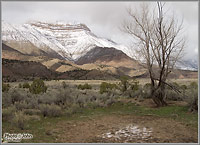 50mm (equivalent) |
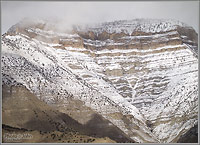 150mm (equivalent) |
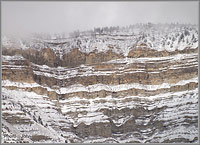 300mm (equivalent) |
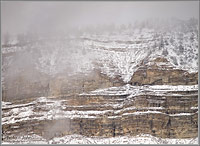 600mm (equivalent) |
The photo stop in Parachute, Colorado was just the beginning of a great photo day, which finished when I dropped back into Utah County and caught a truly majestic sunset on Mt. Timpanogos. I definitely would have made great photos without the Olympus 75-300mm zoom. But having that extra reach really does allow you to take photos that would be impossible with shorter lenses. And did I mention how small it is?
There are a few of downsides to the Olympus 75-300mm f/4.8-6.7 ED MSC lens – mostly because it’s so crazy long. The most obvious problem is camera shake. Even with the E-PL2′s built-in sensor-shift image stabilization I’ve found I need to be using shutter speeds over 1/1000th of s second to get sharp handheld photos. Heavier cameras dampen camera shake because of their weight but the Pen camera is so light it’s next to impossible to really hold it still. And that super long lens magnifies every little twitch. So good light is a must for sharp handheld photos with the 75-300mm lens. But when you’ve got good light, oh boy – the things you can do!
There’s a second problem that has to do with the incredible reach of the lens. You can pull in stuff at 600mm that’s so far away that you start to have problems with the amount of atmosphere you’re shooting through. The photo below is not really sharp because the air and temperature variables blur the image. Even though it was cold – probably about 40-degrees Fahrenheit when I took it, when you view it at 100% you can see what look like heat waves. I shot some other photos that had similar sharpness problems. It’s possible that the lens isn’t as sharp at full zoom – I haven’t actually tested that. But in the photo below you can clearly see variables in the air. That’s not something you encounter with a 200mm lens on a full frame or APS-C digital SLR.
The final issue is the slow, variable aperture. Most serious photographers would never consider a lens with an f/4.8-6.7 variable aperture. That’s very slow and doesn’t allow for the kind of depth-of-field control that a lot of pros are looking for with long lenses. However, you need to consider the intended purpose of the Pen system to put the slow aperture in perspective. A fixed aperture f/4 150-300mm lens would be huge compared to the f/4.8-6.7 lens and the whole point of the Pen system is traveling small and light. If you do want a faster aperture lens you can get all kinds of Micro Four Thirds lens converters and mount whatever you want on the Pen cameras – including the $7,000 five-pound Canon EF 300mm f/2.8L IS II USM.
I’ll continue to use this lens and update this page. I still need to do brick wall tests with the Olympus 75-300mm f/4.8-6.7 ED MSC lens. Those will tell me if there are any serious optical issues with the lens. I haven’t noticed anything glaring yet, though. If you have any questions about the Olympus 75-300mm Micro Four Thirds lens or the Pen system please ask them in the comments section below. I’ll do my best to answer them or test the lens for you. Your questions and comments will make this a better resource for other photographers so please don’t hesitate – let ‘em rip!
More Olympus M.Zuiko 75-300mm Photos >>
Olympus M.Zuiko 75-300mm Lens Announcement >>
Related Content:
All Olympus User Reviews
All Camera Lens
EVIL and Micro Four Thirds Cameras Forum
Olympus Cameras and Four Thirds System Digital SLRs Forum
Digital SLRs Forum
Olympus News, Reviews & Articles
EVIL and Micro Four Thirds Cameras Articles
Olympus Web Site


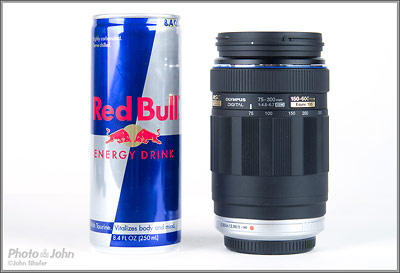

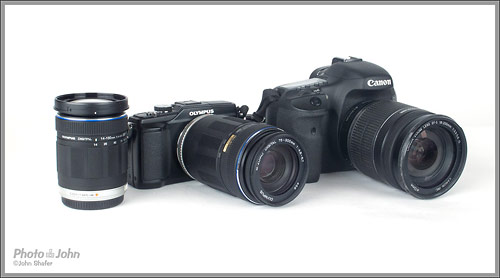
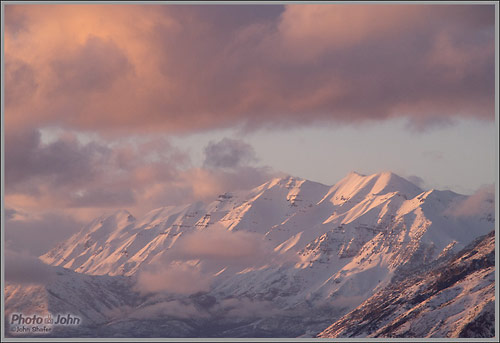
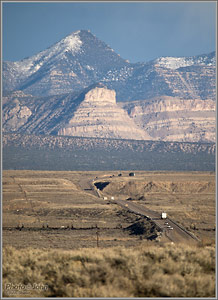
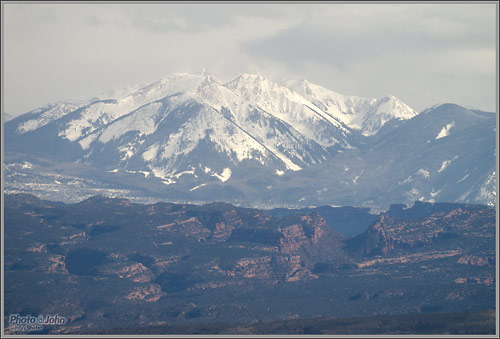
Interesting you mention the Canon lenses, John.
I have a bagful of them.
Does anyone make an adapter that will allow you to change the aperture on an EF lens with a micro 4/3 camera?
Or one that will enable manual focus?
Without that, which means powering on the lens and understanding Canon’s EF connections and communications protocol, surely the lens is just so much dead weight?
PAul
My mistake, Paul. I double-checked and you’re right – no adapters for EOS lenses. I checked Novoflex, who make a whole bunch of adapters and they have one for Micro Four Thirds to Canon’s old FD manual focus lenses but none for EOS lenses. Sorry about that. Thanks for commenting and making sure people weren’t mislead by my mistake
wow! great shots…
why is this lens a “reasonable price” to you ($899) when the 70-300 f/4 is $399?
That’s a good question, George. I admit that the price of the Micro Four Thirds 75-300mm lens was a bit of a shock when it was announced. It is a big chunk of money by most standards. However, compared to equivalent digital SLR lenses it’s relatively inexpensive. And most important, It’s tiny compared to the already very small Four Thirds lens Optically, it had to be an engineering challenge. And considering the size and what it’s capable of, I think it’s a pretty good deal. There’s nothing this small that offers the kind of reach and quality that this lens does. There’s one other option (besides using a Four Thirds adapater and the Four Thirds 70-300mm lens), the Panasonic Lumix 100-300mm f/4.0-5.6, which is faster. But it’s also much, much bigger.
I am considering this lens along with the Panasonic 100-300 fornuse on the E-PL2 camera. Any thoughts?tailwai
Gary-
I don’t have any experience with the Panasonic lens, Gary. So I can’t say much about it other than speculate based on the specs. The f/4.0-5.6 max aperture is about half a stop faster than the Olympus so it should be better in low light, although this focal length range isn’t really one you’d want to use in low light because camera shake is a real issue – even with image stabilization. The main benefit of the Olympus lens is it’s a lot smaller and lighter. The Panasonic’s optical image stabilization along with the larger aperture makes it almost twice the size and about 1/4 pound heavier than the Olympus.
Since I’ve used the Olympus and it worked well for me, I think I’d go that way to save the space and weight. I’m guessing the image quality of the two lenses is pretty comparable. The only area where the Panasonic might have a real edge is image stabilization. Again, I can’t speak from experience but I have a feeling the Panasonic’s optical image stabilization might work better. That said, shooting at the long end (600mm equivalent), you’re going to have to use fast shutter speeds no matter what.
Hi..I just purchased this lens for my EP3 camera and from what I’ve read here and at other sites, the lens is well worth the price. y only concern since I am a novice and my hands tend to shake, is whether I will really have issues with the lens if I don’t use a tri or monopod …also I am still using the auto function on the camera and whether I will have to adjust to manual to obtain quality photos at the longer telephoto range…any suggestions or hints on shutter speed, ISO etc.. thanks so much.